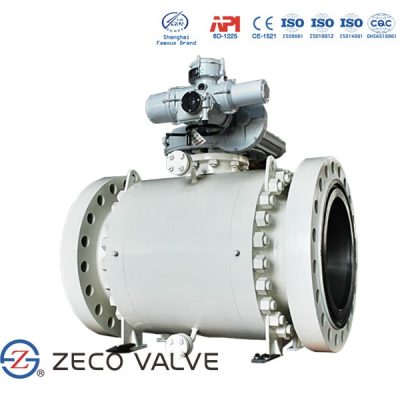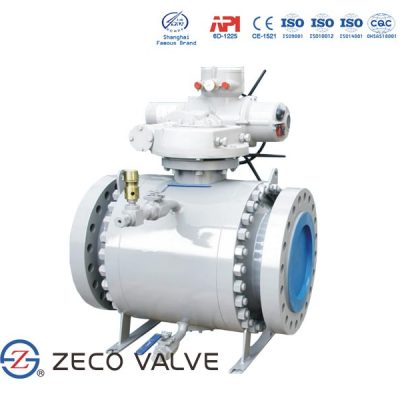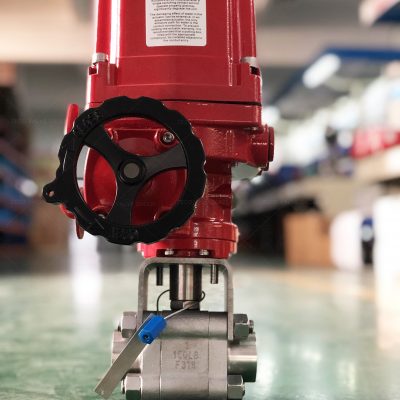As an electric actuator ball valve manufacturer with 30 years of experience, ZECO Valve will help you choose the right quality electric ball valve basic on your project requirements. We believe that will help your business rocket with our experience. We aim to offer an integrated turnkey valve solution to our clients.
What is an Electric Actuator Ball Valve?
Ball valves can be combined with an electric actuator (electric ball valves) for automation and/or for controlling remotely. Depending on the application, automating with an electric one may be more advantageous, or vice-versa.
Ball Valve Overview
A ball valve is a quarter-turn valve that controls the flow of a media by having a hollow rotating ball, as seen in Figure 2. The figure shows the main components of a manual ball valve in a sectional view. When the hollow portion of the ball is in line with the flow (pipe or hose), the valve is open and the media can flow through. The valve closes when the solid portion of the ball is in line with the flow, which is done with a 90-degree rotation (hence the name quarter-turn valve) of the ball.
Details of Ball Valves
- Ball Valve Types: 2 port, 3 port (T port and L port), 4 port (X port)
- Connection Types: Threaded type, flanged type, food-safe type, double union type
- Rotation: 90 degrees
- Size range: 1/2″, 3/4″, 1″, 1-1-4″, 1-1/2″, 2″, 2-1/2″, 3″, 4″, 5″, 6″, 8″
- Body Material: Stainless Steel 304/316/316L, WCB, PVC
- Seal Material: PTFE, VITON, EPDM, NBR
- Suitable Medium: Water, Oil, Air, Gas, etc
- Features: Easy to install, zero-leakage, long service lifetime, well for fluid control
Actuator Overview
A valve actuator is a device that is used to remotely control a valve. If it controls a quarter-turn valve, the actuator is known as a quarter-turn actuator. Instead of a manual lever, you can mount an actuator on the valve to automatically and/or remotely control it. Actuators use a power source to generate the torque that is required to operate (rotate) a ball valve. For most actuators, the power source is either pneumatic, electric, or hydraulic (not discussed in this article). The difference in this power source makes different designs, which each have different advantages and disadvantages for certain applications (discussed below). Aside from the torque generating component, an actuator may have other features such as position indicators and manual override.
Details of Electric Actuators
Electric actuators convert electrical energy into rotary force by the use of an electric motor to turn the ball valve through 90 degrees. They are energy-efficient, clean, and a quiet method of valve control. The electric motor can be powered by an alternating current (AC) or a direct current (DC). It is housed in a robust, compact housing that also contains other components of the actuator such as gearings, limit switches, wiring, etc. The whole assembly is connected to a valve through a compatible connection interface, such as an ISO 5211 standard.
- Actuator Type: ON/OFF Type Actuator, Modulating Type Actuator, Intelligent Type Actuator
- Rotation: Quarter turn 90 Degrees
- Torque Range: 50Nm to 4000Nm
- Voltage: DC-12V, 24V; AC-24V, 110V, 220V, 380V
- Input/Output Signals: 4-20mA, 1-5VDC, 0-10VDC
- Protection Class: IP67 Weather-Proof
- Environment Temperature: -22℉ to 140℉
- Mounting Standard: ISO5211 mounting standard
- Features: Overloading protection, low failure rate, control locally or remotely





